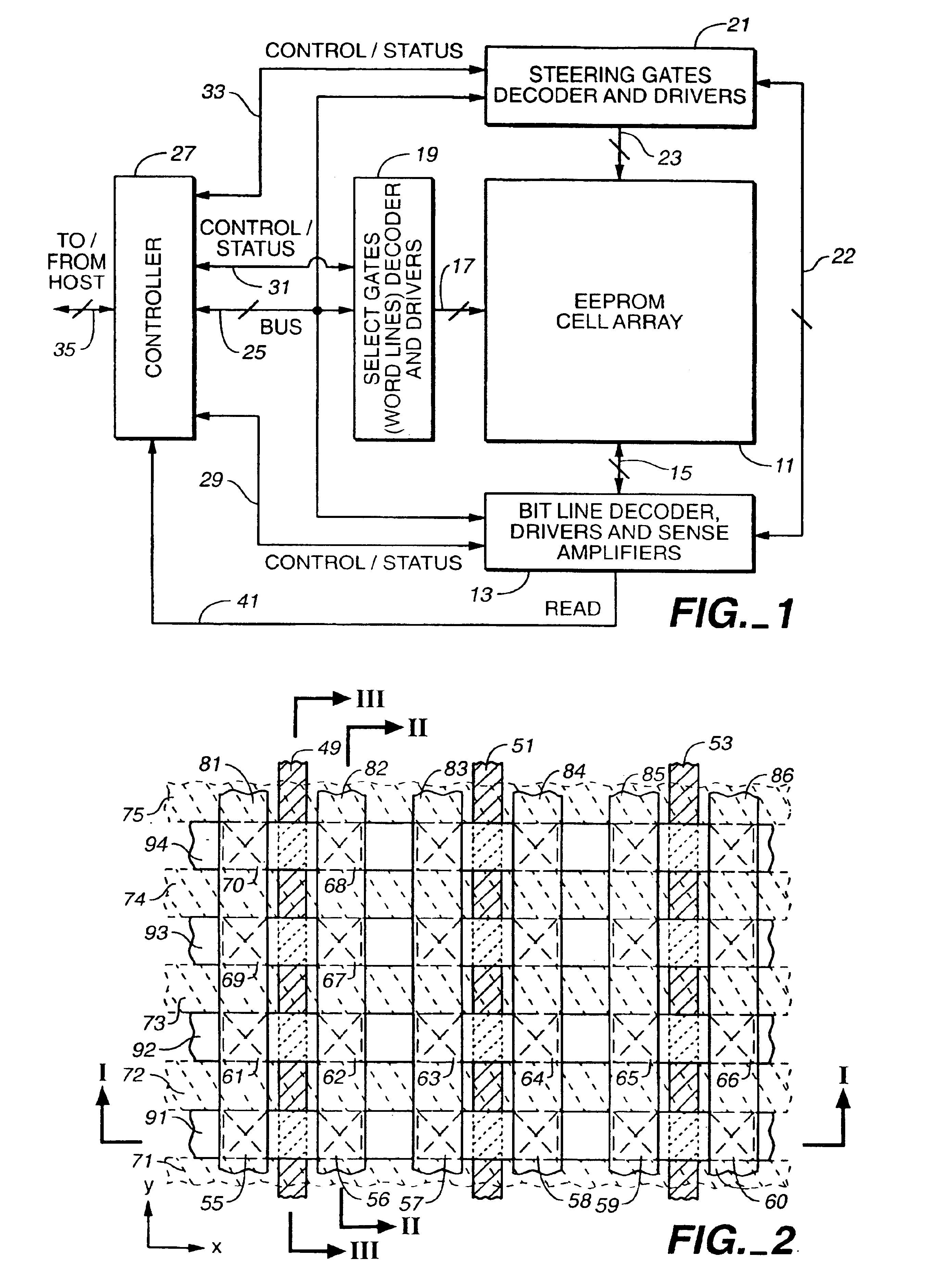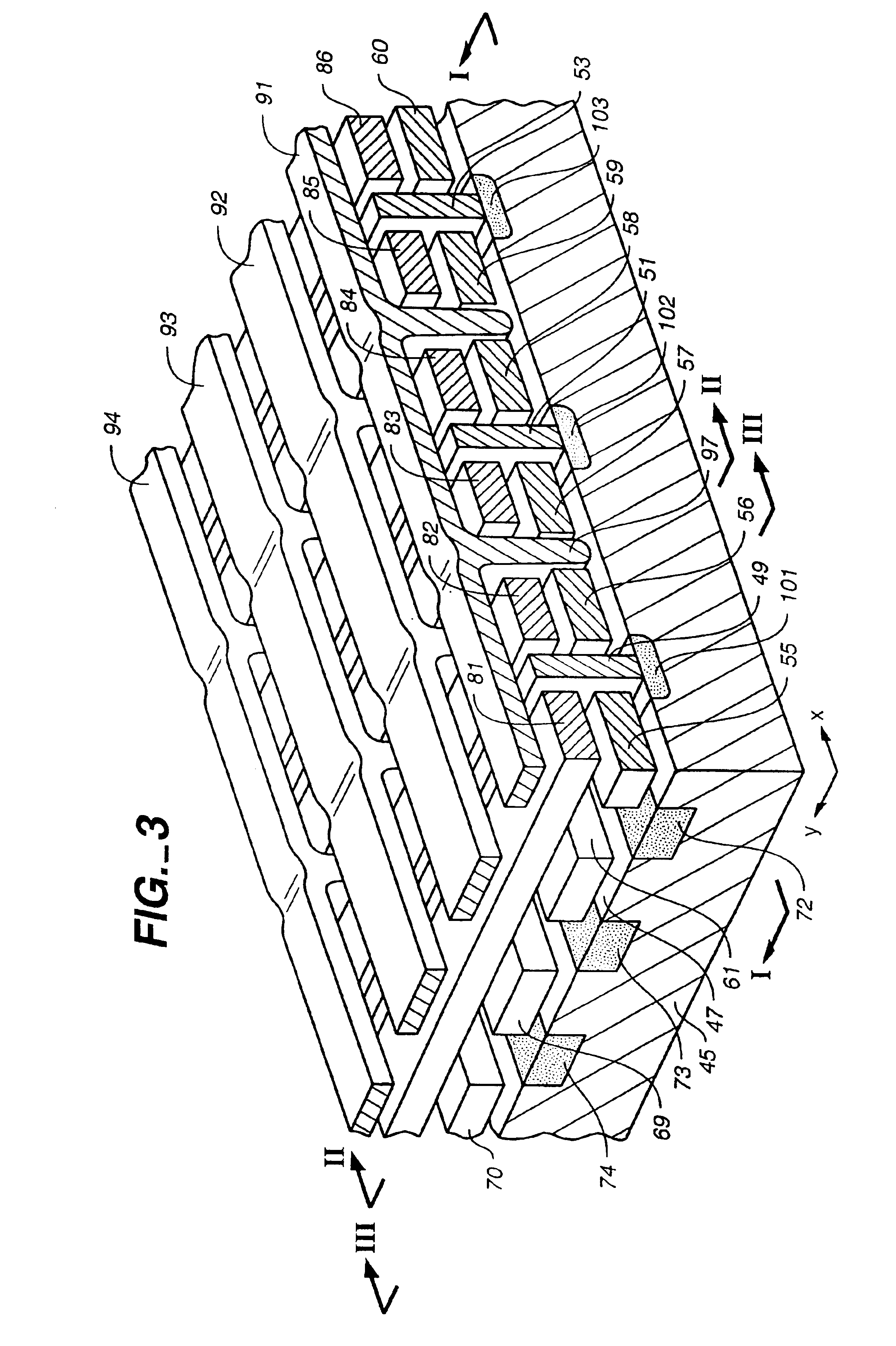Non-volatile memory cell array having discontinuous source and drain diffusions contacted by continuous bit line conductors and methods of forming
a memory cell and discontinuous source diffusion technology, applied in the field of flash eeprom cells, can solve the problems of limiting the amount of overall layout shrinkage, the difficulty of performing both of these functions, and the limit of circuit layout shrinkage, so as to achieve high data storage density
- Summary
- Abstract
- Description
- Claims
- Application Information
AI Technical Summary
Benefits of technology
Problems solved by technology
Method used
Image
Examples
Embodiment Construction
[0025]An example memory system incorporating the various aspects of the present invention is generally illustrated in the block diagram of FIG. 1. A large number of individually addressable memory cells 11 are arranged in a regular array of rows and columns, although other physical arrangements of cells are certainly possible. Bit lines, designated herein to extend along columns of the array 11 of cells, are electrically connected with a bit line decoder and driver circuit 13 through lines 15. Word lines, which are designated in this description to extend along rows of the array 11 of cells, are electrically connected through lines 17 to a word line decoder and driver circuit 19. Steering gates, which extend along columns of memory cells in the array 11, are electrically connected to a steering gate decoder and driver circuit 21 through lines 23. Each of the decoders 13, 19 and 21 receives memory cell addresses over a bus 25 from a memory controller 27. The decoder and driving circu...
PUM
 Login to View More
Login to View More Abstract
Description
Claims
Application Information
 Login to View More
Login to View More - R&D
- Intellectual Property
- Life Sciences
- Materials
- Tech Scout
- Unparalleled Data Quality
- Higher Quality Content
- 60% Fewer Hallucinations
Browse by: Latest US Patents, China's latest patents, Technical Efficacy Thesaurus, Application Domain, Technology Topic, Popular Technical Reports.
© 2025 PatSnap. All rights reserved.Legal|Privacy policy|Modern Slavery Act Transparency Statement|Sitemap|About US| Contact US: help@patsnap.com



